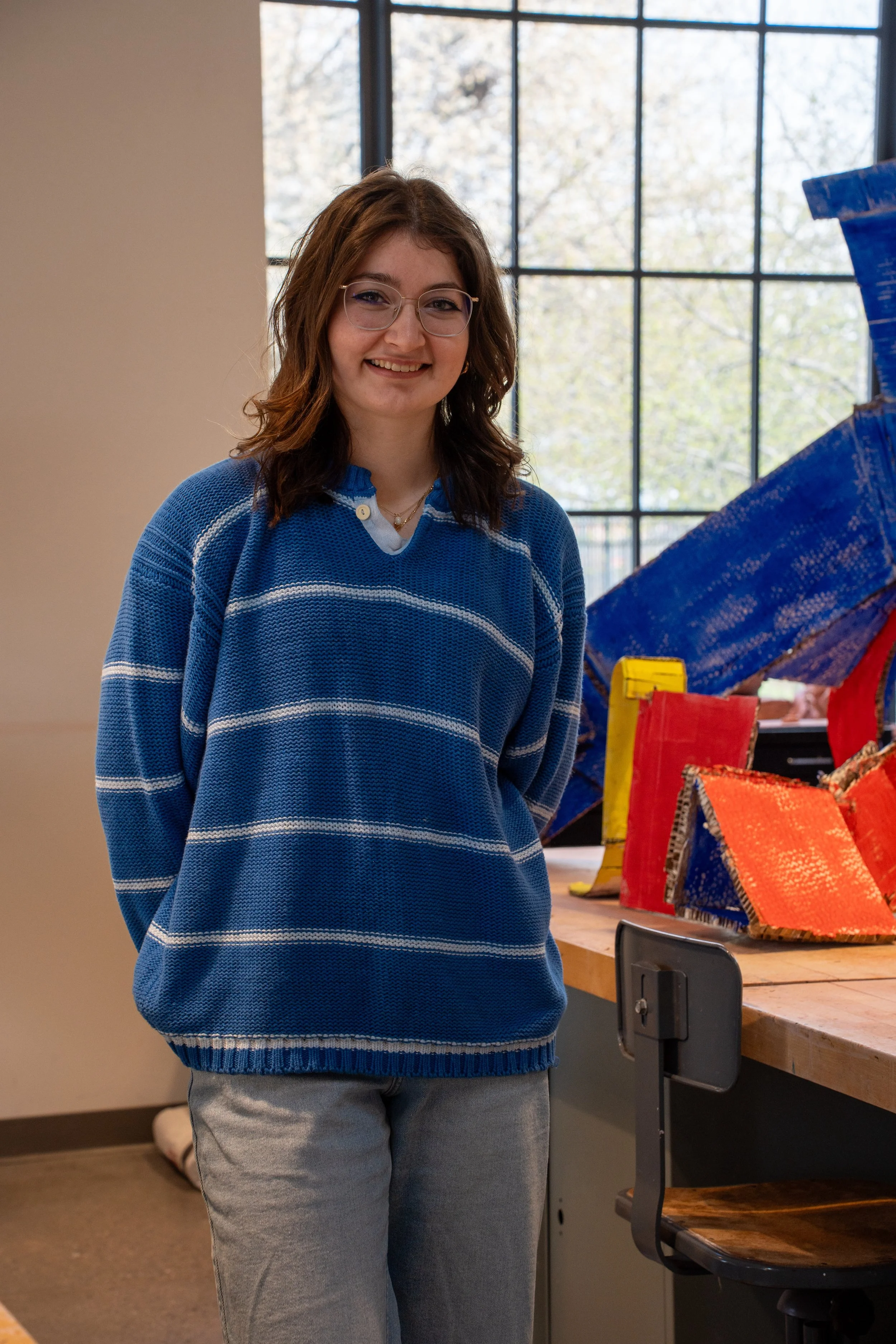Big Sis Ava and the book you never knew you needed
STORY By Laratee VanNieuwenhuyze
For Ava Kaloz ‘25, middle school and high school were defined as times of confinement and struggle, physically and emotionally.
A time of stark physical change and mental drain; that stage of her life was very different from her cathartic time at Marist College. The primary issue that plagued Kaloz throughout those middle and high school years was something most teenagers don’t have to think about. Kaloz was diagnosed with idiopathic scoliosis and dealt with the numerous challenges that came with reversing it.
Now, she looks back on those moments, knowing her experiences can help others in similar situations - even if they were tough to relive at first - in the form of a self-help and advice book she has been writing during her time here at Marist.
But let’s back up and learn more about Kaloz first.
She grew up in Campbell Hall, New York - more commonly referred to by her in passing conversation as “Legoland.” It’s a small hamlet in central Orange County, where the first factory dedicated to producing butter in America was located. In Kaloz’s experience, few people have heard of it, leading her to “Legoland.”
Kaloz was first diagnosed with idiopathic scoliosis during seventh grade, amidst adolescent-turning-teenage angst and the early stages of puberty. The condition refers to the curvature in one’s spine that can worsen in degrees over time to the point where one needs to wear a brace to help slow the curve or reverse it. In the worst case, a spinal fusion surgery where rods are placed in your spine is recommended.
For Kaloz, wearing a brace was suddenly a necessity.
“I was told, ‘Your curve is 31 degrees on the top and 27 on the bottom,’ like a little ‘S,’” Kaloz recalled. “So they said, ‘We’re going to have to recommend that you get a back brace.’”
At the time, she was excited - until she found out what kind of brace it was and how long she would have to wear it each day.
Illustration by Francine Wooley
The back brace that most may think of is likely a standard compression belt brace that can be bought somewhere similar to CVS or Rite Aid - this is not that brace. Instead, Kaloz had to wear one made of heavy fiberglass that was incredibly hard to twist and turn in, and she would have to wear it for 18 hours every day.
“They dropped the bomb on me saying, ‘You’re going to have to wear this for 18 hours a day’… as an eighth grader,” recounted Kaloz. “18 hours is a lot, and that thing is hot because it’s fiberglass. I felt like a burrito.”
Kaloz’s relationship with the brace was strenuous from the moment she put it on. Not only because she was dealing with the pain it caused her but because a life change of this degree would be difficult for any young teenage girl going through puberty. To keep attention away from it, she wore the brace underneath sweatshirts and long-sleeve shirts and on top of tank tops that were always at risk of ripping. Fear of her peers finding out about it constantly plagued her.
Aside from all the support from her family, her solace was her love and passion for art, leading her to create her high school’s art club, which still exists today. She found herself doodling images of braces and spines in her notebook.
“When I got the brace, I was like, ‘Maybe I should just try to use this as an inspiration point.’ So I would draw braces a lot in my notebooks and think, ‘Maybe one day I’ll do something with this; [use it to] raise awareness,’” Kaloz said.
Fast forward, and Kaloz is studying fine arts at Marist with a concentration in studio art as a junior in the Honors Program. Much of her artwork has focused on female empowerment, complex emotions and, now, scoliosis. Her artwork is included in the book she recently wrote in an honors nonfiction writing class with Dr. Kevin Lerner about growing up with idiopathic scoliosis.
This book has always been something that Kaloz has wanted to write. Currently, there aren’t many books for kids and others who struggle with scoliosis to pick up and relate to, something Kaloz feels would have been an immense help growing up.
So, ‘Big Sis Ava’ comes to the rescue.
“When I had the brace, I very much wanted to talk about it, but I didn’t want to talk about it too much because it was personal and very in the moment,” Kaloz recalled. “I wanted to share [my experiences] with people, but I knew I would only really want to do it after the fact.”
The angle of the book was under construction for a while as she decided how to frame it. Should she use it to rant and vent about her experiences and struggles? Or would giving advice and sharing her experiences work better?
Eventually, she settled on giving advice; “In the past three years, I kind of came up with the idea of, ‘What if I try to make this an advice book? I will be your ‘big sis,’ and you can come to me for whatever issue you have; open the book, and I will try to tell you whatever I know.’”
Kaloz’s book has been completed and is awaiting word from agents and publishers. She hopes to get the book published and her artwork displayed in galleries where her proceeds would go towards helping the American Scoliosis Foundation.
Photography by Christopher C. Smith
Video by Max Hochberg and Christopher C. Smith


